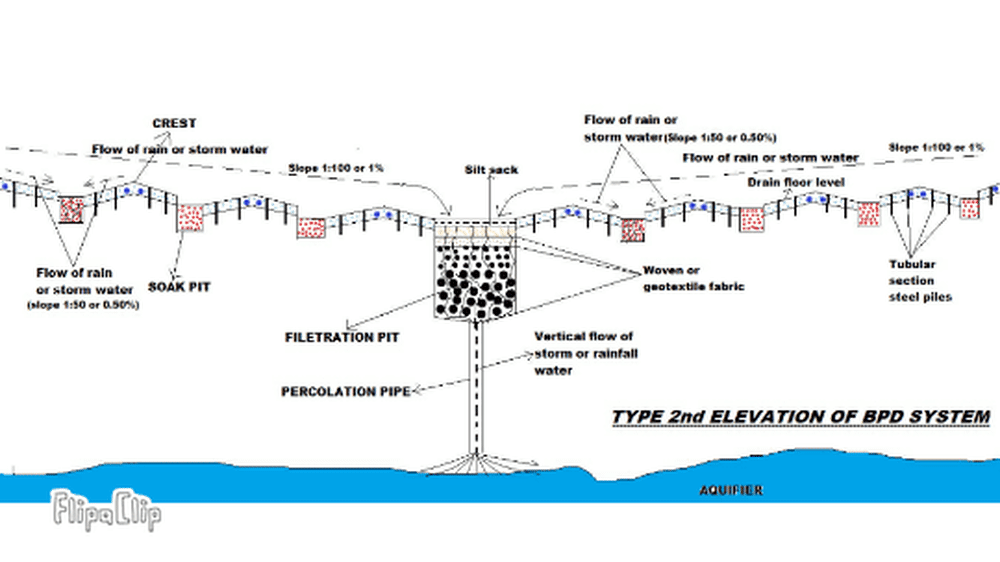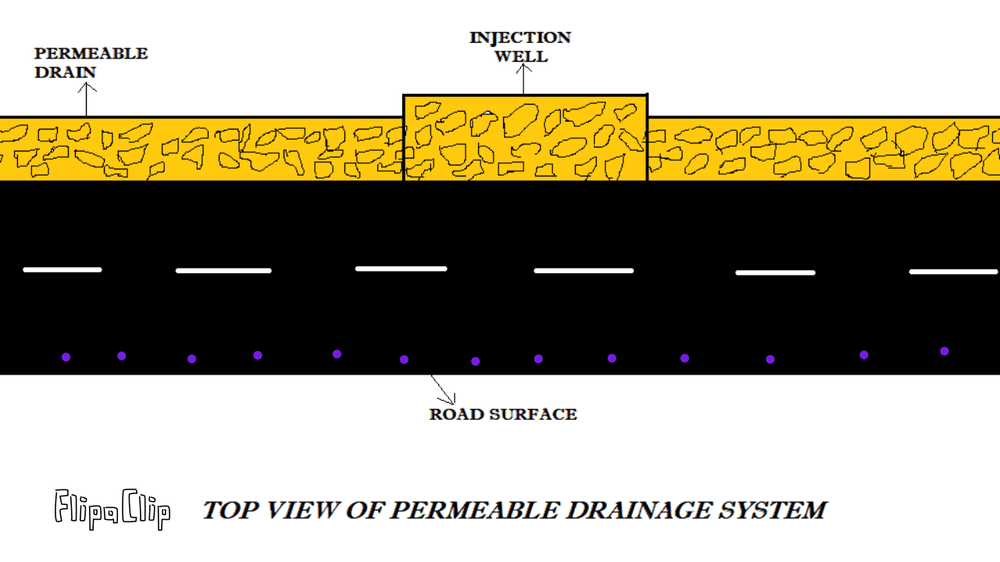The objective of the present disclosure generally relates to the field of drainage management. More specifically, the present disclosure is related to a permeable drainage system for increasing the groundwater level in aquifers, reducing environmental pollution, and re-establishing the natural hydrological balance. The purpose of this drainage system is to protect the groundwater resources which recently decrease in our day-to-day life throughout the whole world.
As discussed in the current disclosure, the permeable drainage system may comprise at least one permeable drain and at least one injection well which may be further connected to aquifers which are the underground reservoirs. In the permeable drainage system, the water such as, but not limited to, stormwater or rainfall water which runoff at the surface of roads or other impermeable surfaces may be collected in the permeable drain and the injection well which thereafter, passes the water in the aquifers. The permeable drainage system may also comprise a plurality of soak pits for collecting water during heavy rainfall conditions.
BENEFITS OF PERMEABLE DRAIN OVER TRADITIONAL TYPE
- This drainage system controls the intensity of floods in rivers or streams.
- This type of drainage system generates less CO2 emissions as compared with the traditional type of drainage system.
- This drainage system mainly increases the amount or percentage of water in our Aquifers, that increase in the water table.
- In BPD system, The water is infiltrated into the soil and the natural soil infiltrate this stormwater and percolate into the Aquifer.
- This BPD system solves water scarcity throughout the whole world compared to traditional type drain.
- This BPD system help re-establish a more natural hydrological balance and reduce runoff volume.
- This drainage system also reduces the water logging problems in low-lying areas of the world and also in the cities/towns near the bank of the river.
- IN PERMEABLE DRAIN, The cost of construction is less as compared to the traditional type of drain.
- This system is an important tool for the retention of stormwater.
- CREATE VALUATION - Indirectly reduction of air pollution from burning stubble (parali) because stubble(parali) can be used in this drainage system therefore we can create a valuation of stubble(parali) by using this drainage system.
- This drainage system indirectly helps to create a loop to control the air pollution and sound pollution because the use of cement material is almost negligible in this system as compared to the traditional type;
Making cement result in a high level of CO2 output and it also increases dust and noise. About 4 to 5% of the worldwide CO2 emissions are caused by cement production and the production of 1tonne of cement results in 780kg's of CO2 in our environment. - In this drainage system, we can use the natural coarse aggregates and sand instead of crushing coarse and fine aggregates which are crushed at crusher plant and as we know that crusher plant is also the reason for sound pollution and air pollution.
Like this entry?
-
About the Entrant
- Name:Ankush Sharma
- Type of entry:teamTeam members:1. Ankush Sharma - B.tech in Civil engineering with 5+ years experience in roads and highways
2. Viney Kumar - M.tech in Civil Engineering - Patent status:pending





